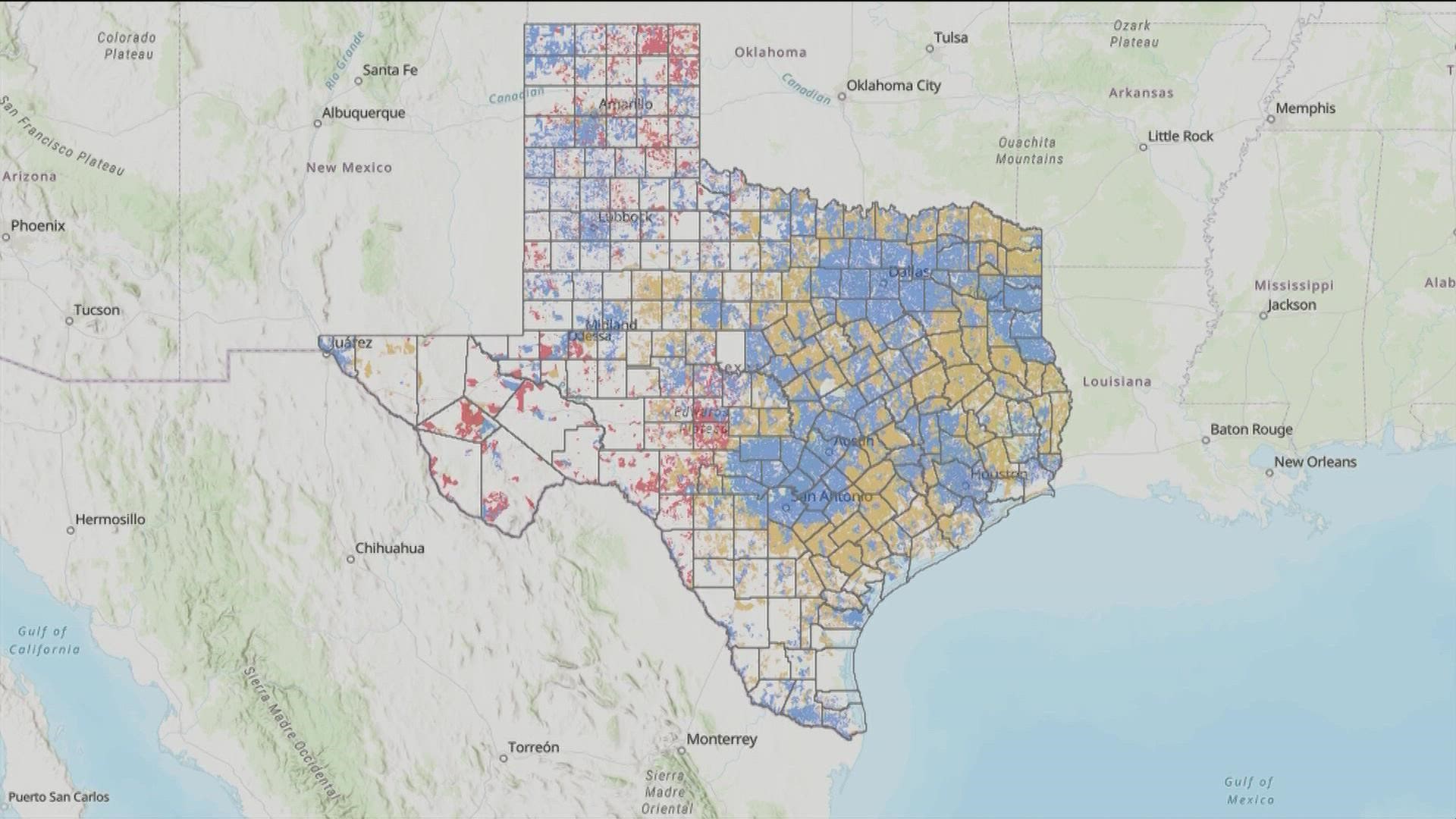AUSTIN, Texas — The Texas Comptroller this week released a broadband map to show where in Texas there is access to high-speed internet from data collected by internet service providers.
Texas Comptroller Glenn Hager released the Texas Broadband Development Map as a way to help identify the areas of the state that can receive funding for broadband expansion projects.
The map, which is interactive, was created using a large pool of collected data from internet service providers and abides by the outlines created by the Federal Communications Commission (FCC) for creating a national broadband map. Furthermore, the map follows the guidelines created in Texas House Bill 5 passed in the regular session of the 87th Legislature.
“For this initial batch of data, we leaned heavily on coverage information provided by ISPs, and we followed federal guidance for speed and eligibility,” Hegar said. “However, the ISP advertised speeds submitted to us don’t necessarily match test speeds on the ground, which is a prime example of the types of flaws that are now more apparent in the federal mapping process and in the definition of broadband services. This is most apparent when you review the speed range layer of the map and see significant areas of the state ineligible for funding under state law, but that clearly have insufficient high-speed broadband service to be competitive in today’s modern world."
The Comptroller's Texas Broadband Development Officer (BDO) plans to update the map biannually for any further information and data that has been collected.
According to state law, areas are eligible for funding "if less than 80% of the locations have access to internet at speed of 25 megabits per second downstream (mbps) and three mbps upstream."
Although the statue for high-speed internet mirrors that of the FCC, Hager and the BDO stated that the speeds are not sufficient to meet the needs of many communities across Texas.
“The FCC’s current definition of high-speed internet as 25/3 mbps is becoming rapidly obsolete,” Hegar said. “One of the things we learned talking to stakeholders around the state last year was that to be truly competitive, communities need internet that is faster than the FCC’s definition of high-speed broadband. For that reason, we designed the map to show coverage at various speeds. We also heard that reliability was a constant concern for certain types of technology, so we want to show stakeholders and lawmakers what type of technology is available in their areas. This functionality will be crucial as lawmakers and the BDO work to prioritize funding in the coming year.”

